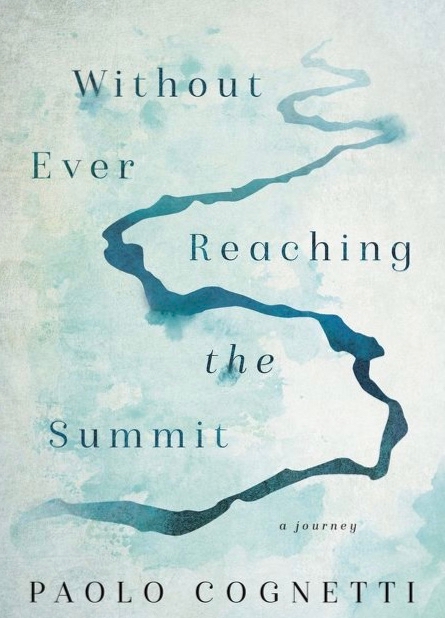
The Common Miracles
June 12, 2020 | The Wall Street Journal
What is a mountain: Is it a trophy or a temple? Recently we have begun to claim nature’s grandest tableaux as prizes. Alex Honnold climbs El Capitan with no rope. Crowded rows of paying customers line the summit ridge of Mount Everest like Black Friday shoppers. Alpinists rush to check off the highest peak of every state, or every continent, sometimes throwing in the north and south poles for good measure. In these cases and others like them, our impulse toward acquisition has overwhelmed the tranquility of the outdoors, creating a breathless set of imperatives: first, fastest, highest. Cameras roll, social-media posts go up, and no one has time for sunsets.
The Italian writer Paolo Cognetti offers a reprieve from this frenzy in the form of a meditation. In “Without Ever Reaching the Summit,” he contrasts bold mountain ascents with the ancient tradition of the pilgrimage: “I found violence in the first gesture, kindness in the second; a desire to conquer as opposed to embrace,” he writes. For his 40th birthday he therefore made a pilgrimage of his own. In 2017 he traveled to the Buddhist monastery at Shey Gompa, deep in the Himalayas on the border of Nepal and Tibet. This itinerary took Mr. Cognetti in the footsteps of Peter Matthiessen (1927–2014), whose iconic 1978 travel memoir “The Snow Leopard” recorded a journey along the same path, and in the same spirit of humility and self-discovery.
“Without Ever Reaching the Summit” is an exquisite book by a writer of rare wisdom and grace. Its rhythms move at the pace of the walking step and the flowing stream. Mr. Cognetti wears no sponsor’s logo; he carries no stopwatch to time an ascent. He pauses to record a thought or to sketch a valley in a fine and distinctive hand. (Several of his notebook drawings decorate the text.) His prose is spare and in its simple precision frequently attains great beauty. As he moves over mountain passes, high by American standards yet miles below the tallest Himalayan peaks, he writes candidly about the altitude sickness that has plagued him all his life. Mr. Cognetti nevertheless finds the strength to remark on the quality of the very air that surrounds him: “At that altitude the light had something absolute to it, like light in its purest state.”
“The Snow Leopard” is one of the great works of modern literature, a masterpiece of travel writing and life in the mountains. To use it as the conceit for one’s own story could go terribly wrong. Yet Mr. Cognetti displays a winning combination of reflection and good nature as he references the earlier book. He playfully wonders whether a stray dog embodies Matthiessen’s reincarnated spirit. And he knows where to cast his gaze: “There was something miraculous about raising my eyes from his diary and finding one by one the things described by him. Forty years for Shey had passed in the blink of an eye. No discoveries and inventions, no wars, revolutions, youth movements, no collapses of empires and ideologies, no music and literature: nothing that had happened in the course of my life had left a mark there.”
Mr. Cognetti takes care not to romanticize the poverty of others while also absorbing the healing effect that his pilgrimage affords. He travels with two friends and the journey occasionally leads the group into cities. They find the experience bewildering. Plastic litter and cramped buildings replace endless vistas, and “clarity of thought becomes muddied.” There is also a certain loneliness in returning to civilization after time in the wild. As Mr. Cognetti wrote in his extraordinary novel “The Eight Mountains” (2016), it is “impossible to convey what it feels like up there to those who have stayed below.”
For all its brevity “Without Ever Reaching the Summit” captures something essential about the metronome produced by a boot on a trail. “Walking was our daily mission, our measure of time and space,” Mr. Cognetti writes. “It was our way of thinking, of being together, of getting through the day, it was the work our bodies now did on their own. Although thinned, bruised, and feverish, each morning they stood up and trudged meekly like mules. Walking reduced life to the essentials: food, sleep, encounters, thoughts.” He concludes this passage on a note of gratitude: “Even more than being able to make do with so little, it was surprising to realize that I had no desire for anything else.”
In one sense a book like this makes for a bittersweet companion in a time of pandemic. Those who pine for the mountains will read it with longing as they await the day when they can once more breathe the high elemental air. But in another sense it is just the volume for this simplifying moment. The modern life we are leaving behind is a bit like the cities that so confound the author: congested, hectic, due for a rinse. Our new, slower pace of living—for those lucky in health and secure in livelihood—is like the crisp, clear mountains. Perhaps going forward there will be less traffic, distraction and greed. Like pilgrims, we may learn to stop and listen, enjoy the world around us and appreciate our time together.
Matthiessen called these things “the common miracles.” He included among them “the murmur of my friends at evening, the clay fires of smudgy juniper, the coarse dull food, the hardship and simplicity, the contentment of doing one thing at a time.” Forty years later, Mr. Cognetti reminds readers in need of healing that common miracles abound, even as the world falls to ruin. They exist beyond the mountains. We need not look up, but only within, to be free.